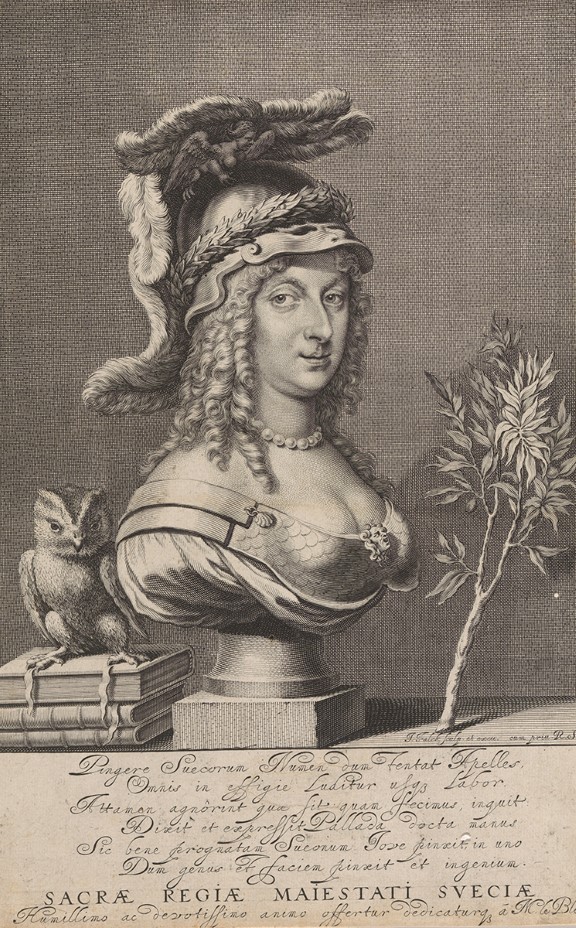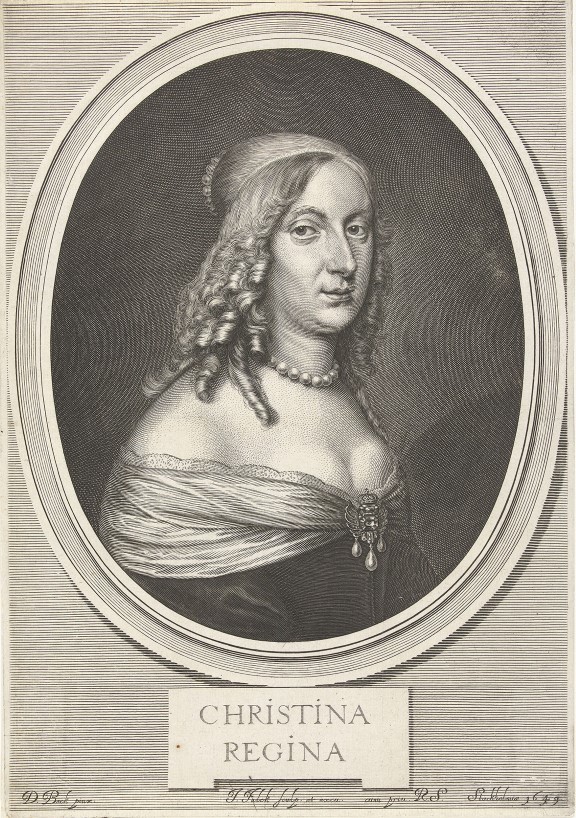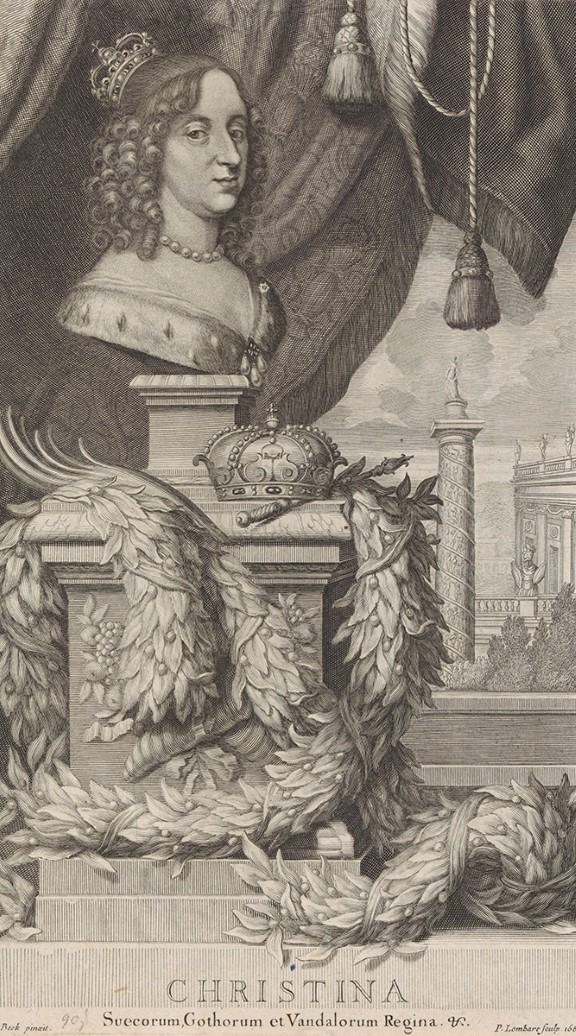
Jeremias Falck, after Erasmus Quellinus and David Beck, "Chistina of Sweden as Minerva" , 1649.
Photo: Nasjonalmuseet / Børre Høstland
Minerva / Pallas Athena
- In Roman mythology, Minerva is the goddess not just of wisdom and warfare, but also of poetry, the visual arts and music.
- Minerva is equated with the Greek goddess Athena, or Pallas Athena, likewise the goddess of righteous warfare and wisdom.
- She was the daughter of Jupiter – or, in Greek mythology, of Zeus – from whose forehead she burst forth dressed in full armour.
- Minerva/Athena is often depicted wearing armour and equipped with a spear, shield and helmet, and with an image of the Medusa’s head on either her shield, cape or breastplate. She is often accompanied by an owl perched on a stack of books, both symbols of wisdom.
- In the 17th and 18th centuries, allegorical portraits that depict the subject as a god or goddess were a common device. Being portrayed as Minerva was especially popular for women in the public eye who worked to promote the arts.

Jeremias Falck, after David Beck, "Christina of Sweden", 1649.
Photo: Rijksmuseum, Amsterdam

Pierre Lombart, etter David Beck, «Kristina of Sweden», 1668. From Samuel von Pufendorfs book from 1696.
Photo: Nasjonalmuseet / Børre Høstland
The portrait collection
- The National Museum’s collection of prints and drawings contains around 3 000 portrait prints. Roughly 130 of these are of women.
- The portrait of Queen Christina as Minerva was part of a large consignment of graphic prints donated by Valborg Stang and her son Christian Sissener when the Christiania Collection of Engravings and Drawings was established in 1877. These prints were formerly the property of the philologist Carl Melchior Stang (1811–73).
- In the 1880s and 1890s, conservator Fredrik Gundersen took the initiative to expand the portrait collection. A collection of historical and contemporary portraits was something every national gallery should have.
- In 1969, large parts of the portrait collection were placed in the keeping of the University of Oslo Library. Since then they have been transferred to the National Library of Norway.